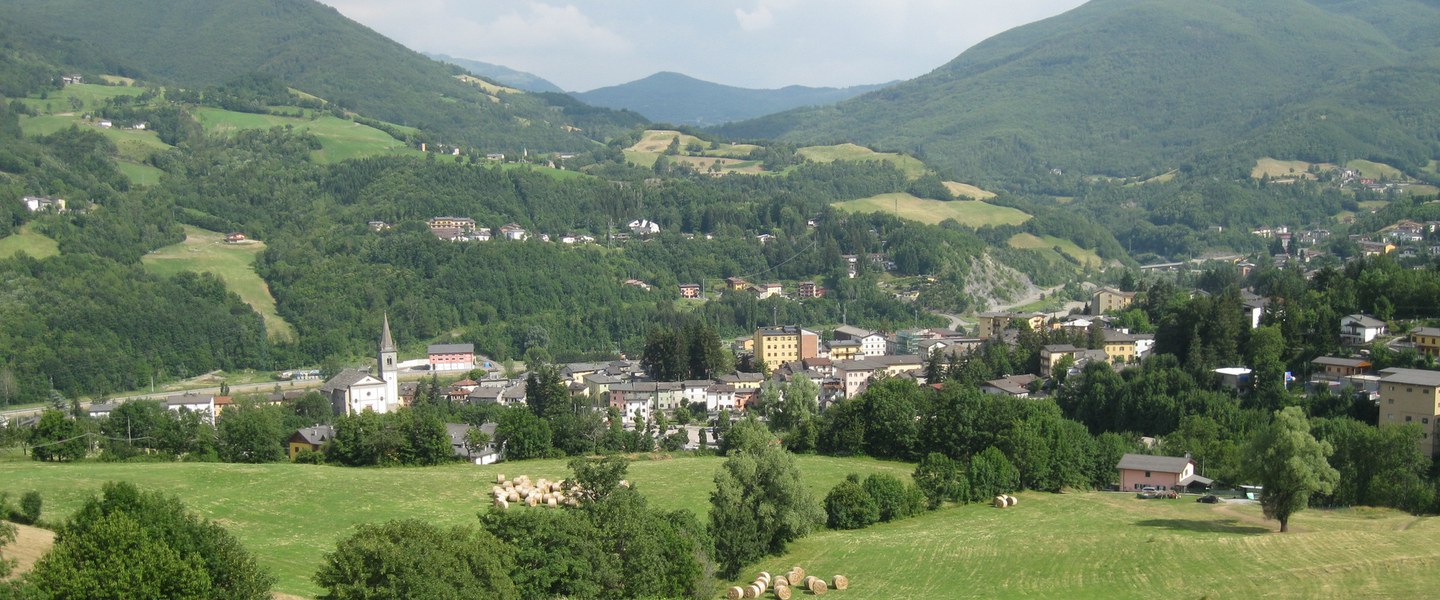Pievepelago
In the centre of the Pelago valley, on the banks of the River Scoltenna, in a hollow between the woods of beech, chestnut and conifer trees, it is a part of the Frignano Regional Park. In ancient times, this region was inhabited by the Ligurian Friniates, with their customs and traditions similar to those of the Celts. It came under Roman domination and when the empire fell, it was also administered by the Byzantines and then by the Longobards.
Due to its strategic position, in the Middle Ages, Pievepelago was the site of battles that saw it first come under the rule of the Da Montegarullo family and then the Este family. In the eighteenth century, thanks to the construction of the historic Via Vandelli, connecting Modena with Tuscany, it enjoyed a period of flourishing trade development.
Why it’s worth a visit
A tourist town in the Upper Frignano district, Pievepelago is surrounded by mountains that are home to some of the most enchanting lakes in the Apennines, such as Santo, Baccio, Turchino, Piatto and Nero. It is therefore an excursionist’s paradise, who can enjoy wonderful hikes along numbered trails up Mount Giovo at 1991 metres a.s.l. and Mount Rondinaio at 1,964 metres. Pievepelago is also popular for some interesting examples of architecture. If then you are a keen skier, there is plenty of choice offered by the Sant’Anna Pelago ski resort.
Sites you won't want to miss
The old town centre
The ancient Via Tamburù runs through the old town centre of Pievepelago, the historical main street that every year is carpeted with flowers to the traditional Infiorata festival to mark Corpus Domini. It has some interesting pieces of architecture, such as the fountain in Piazza Ricci, topped with an obelisk and considered to be the town symbol and the parish church of Santa Maria Assunta. The latter, rebuilt in 1868, in addition to its lovely classic façade has three naves, a huge, very elegant presbytery and is home to some interesting works of art such as the altarpiece of the Assunta by Carlo Rizzi, a beautiful Saint Philomena by Adeodato Malatesta and a San Luigi Gonzaga by Luigi Asioli. Beside the church stand the oratories of San Luigi and dei Bianchi.
Good things to eat
Like many other towns and villages in the Apennines, a typical fruit in Pievepelago is the Modena Apennine bilberry used to make delicious jams, syrups, juices and liqueurs.
And then there an abundance of typical traditional mountain dishes such as, for example crescentine flatbreads and borlenghi pancakes.
Important events
The Infiorata del Corpus Domini
The Infiorata di Pievepelago is an religious event that dates back to 1927 to mark Corpus Domini. Floral artists strew a colourful carpet of flowers along the ancient Via Tamburù to decorate the route of the procession. Coinciding with the festival to celebrate the arrival of the summer it is the main event locally and every year attracts a huge number of visitors.
Nearby
Roccapelago and its Castle
In the past a stronghold belonging to Obizzo da Montegarullo, Roccapelago castle is perched on a rocky outcrop at over 1000 metres a.s.l., overlooking the Pelago valley. In 2011, an amazing discovery was made in the church crypt: over 300 bodies buried between the sixteenth and eighteenth centuries, a hundred of them mummified. The fort today houses the Museum “Sulle orme di Obizzo da Montegarullo” (In the footsteps of Obizzo da Montegarullo).
Celtic huts in Pievepelago
There are several Celtic huts in and around Pievepelago, buildings that copy the Celtic construction technique with their characteristic stepped roofs. One of the best preserved is in Roncacci-Casoni.
Fola Bridge
A kilometre outside Pievepelago, Fola Bridge is an imposing stone humpback bridge over the River Scoltenna, with asymmetric arches. It is the only two-arched stone bridge in the whole of Emilia.
Sant'Anna Pelago
This is an Alpine and Nordic ski resort in the winter and the starting point for various trails for hikers and excursionists. Sant'Andrea Pelago A village nestling in the untamed natural setting of Frignano park, where there are also Celtic huts, the ruins of a medieval keep, the oratory of San Rocco, and the Baronio fountain plus many other fountains fed by mountain streams.
Via Vandelli
This historic eighteenth-century road through the Frignano mountains connected Modena with Tuscany and some stretches around Sant’Andrea Pelago are still practicable today.
Lake Santo and Lake Baccio
In the mountains around Pievepelago hide some marvellous lakes, like Lake Santo, the biggest of the Apennine lakes and starting point for wonderful excursions up to the top of the Giovo and Rondinaio mountains and to other nearby lakes, including Lake Baccio, which has glacial origins.
When to come
Pievepelago is a perfect tourist resort in both summer and winter.






